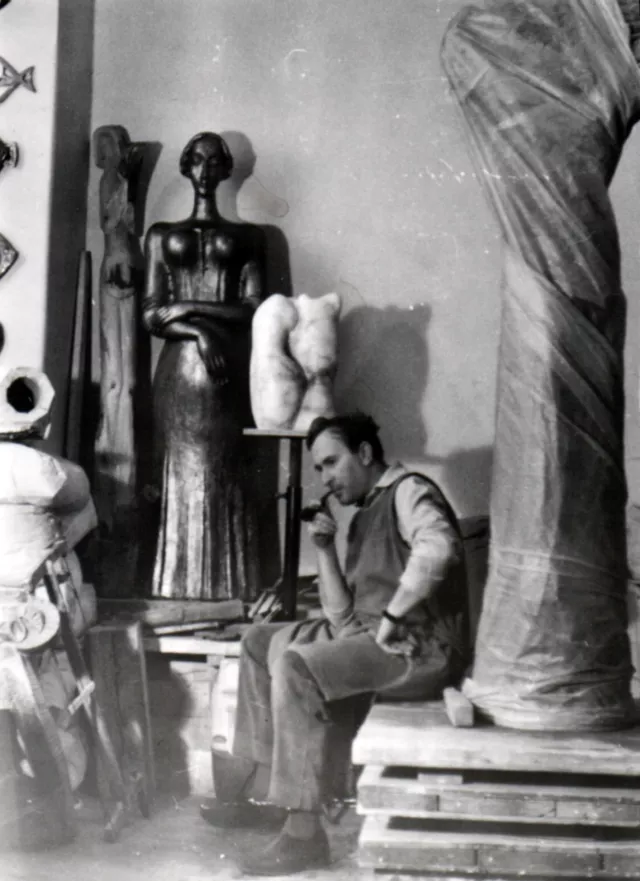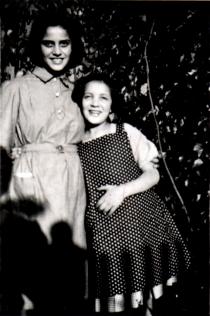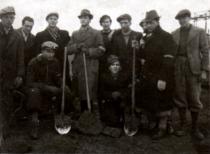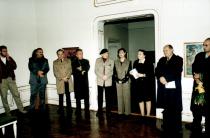Egon Lovith in his atelier
This is a picture of me in my atelier. The photo was taken in 1964. One of my photographers took it. I had about two or three photographers who regularly came to take pictures of my work.
When the Ion Andreescu Institute of Arts was formed, the Uniunea Artistilor Plastici [Union of Fine Arts] was already operating and I had been a member since my student years. The Uniunea Artistilor Plastici in Kolozsvar was modeled after the Union in Bucharest. Ciupe and his friends established it. [Aurel Ciupe was the director of the Institute of Fine Arts in Kolozsvar.] There's still an office above the university bookstore, where we used to meet. At the time they knew I was looking for an atelier that I could use after I was done with my studies. My professor, Irinescu, got an atelier, which I have today, but he went back, I think to Bucharest, and in 1953 he offered the atelier to me. The atelier is in the downtown area. There was only a water pipe and a light bulb in the room. Once I got the atelier I installed the gas and with a lot of money I made it into a real atelier.
In 1957 I made a lot of sculptures with peasant themes, for instance the 907. That's what it was called, 907. [Editor's note: The name is referring to 1907, commemorating a Romanian peasant rebellion of that year.] In Mexico I grew up among Indians and I saw what working in the fields was like. The problem was that I made peasants who looked thin just like the field workers in Mexico. One of my sculptor colleges from the sculpture department, without telling me, wrote a very negative article in Fratia [Brotherhood], a local Romanian newspaper: 'Lovith makes fun of Romanian peasants. Lovith's peasant figure rather resembles a mosquito.' He wrote that because the peasants were thin and they were under hardship. I created four bony peasants under a tree, with crows up on the tree, waiting for these peasants to die because their death was inevitable. They were made out of plaster and I was supposed to cast them. In my anger I only left one piece and broke into pieces all the others. Many people told me I was crazy when I said, 'I'm sick of this, I will not use a subject like this ever again'. My remedy came when in 2002 the Kolozsvar Art Museum asked me to give them my one remaining peasant sculpture, which I hadn't broken. I took the sculpture to the museum myself by car.
During the time of Gheorghiu Dej, in the 1950s, I made a two and a half meter sculpture in the memory of the deported people: three figures - extremely bony people. I portrayed their moment of liberation but it wasn't received too well in the Ministry. The Museum of Bucharest bought it but a few years later they contacted me to let me know that the sculpture was in very bad shape. I told them I would go up to Bucharest and repair it but they never got back to me and my sculpture disappeared.































